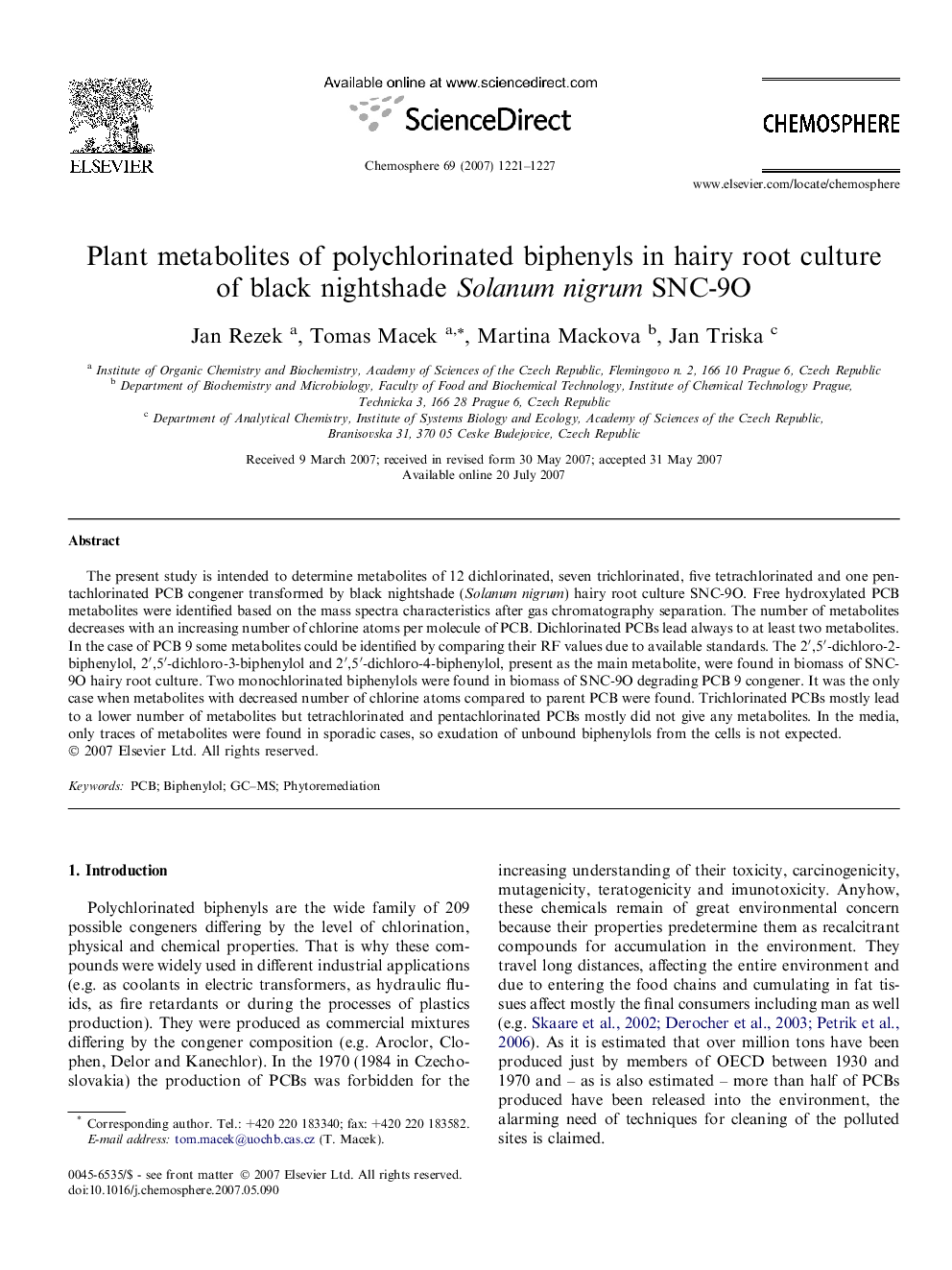| Article ID | Journal | Published Year | Pages | File Type |
|---|---|---|---|---|
| 4414652 | Chemosphere | 2007 | 7 Pages |
The present study is intended to determine metabolites of 12 dichlorinated, seven trichlorinated, five tetrachlorinated and one pentachlorinated PCB congener transformed by black nightshade (Solanum nigrum) hairy root culture SNC-9O. Free hydroxylated PCB metabolites were identified based on the mass spectra characteristics after gas chromatography separation. The number of metabolites decreases with an increasing number of chlorine atoms per molecule of PCB. Dichlorinated PCBs lead always to at least two metabolites. In the case of PCB 9 some metabolites could be identified by comparing their RF values due to available standards. The 2′,5′-dichloro-2-biphenylol, 2′,5′-dichloro-3-biphenylol and 2′,5′-dichloro-4-biphenylol, present as the main metabolite, were found in biomass of SNC-9O hairy root culture. Two monochlorinated biphenylols were found in biomass of SNC-9O degrading PCB 9 congener. It was the only case when metabolites with decreased number of chlorine atoms compared to parent PCB were found. Trichlorinated PCBs mostly lead to a lower number of metabolites but tetrachlorinated and pentachlorinated PCBs mostly did not give any metabolites. In the media, only traces of metabolites were found in sporadic cases, so exudation of unbound biphenylols from the cells is not expected.
